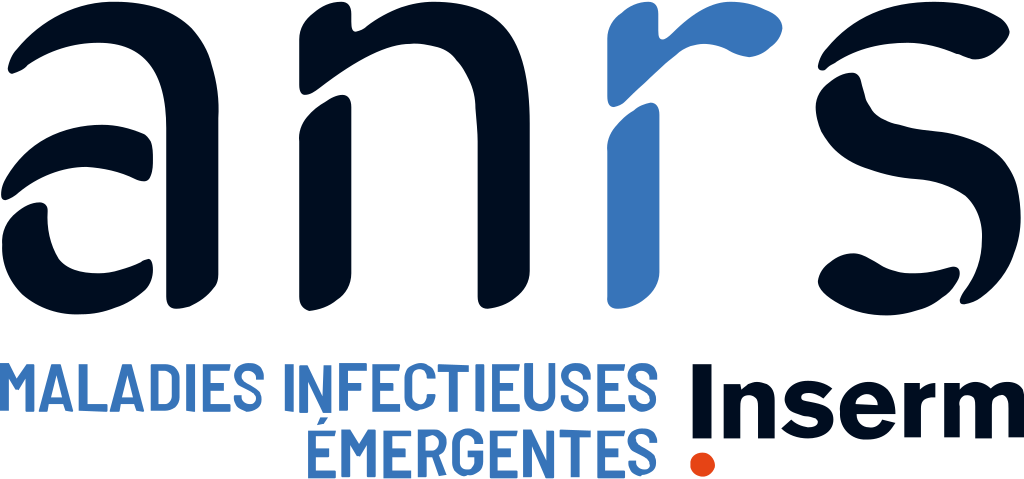Non-nucleoside reverse transcriptase inhibitors
| Mutations associated with resistance | Mutations associated with « possible resistance » | |
| EFV |
||
| NVP |
||
| ETR | ||
| RPV | ||
| DOR |
EFV: efavirenz, NVP: nevirapine, ETR: etravirine, RPV : rilpivirine, DOR : doravirine.
For DNA provirus, impact of stop codons and G->A mutations on ARV resistance is unknown.
1/ Harrigan PR, Mo T, Wynhoven B, Hirsch J, Brumme Z, McKenna P, Pattery T, Vingerhoets J, Bacheler LT. Rare mutations at codon 103 of HIV-1 reverse transcriptase can confer resistance to non-nucleoside reverse transcriptase inhibitors. AIDS. 2005 Mar 24;19(6):549-54.
2/ Brenner B et al. A V106M mutation in HIV-1 clade C viruses exposed to efavirenz confers cross-resistance to non-nucleoside reverse transcriptase inhibitors. AIDS. 2003 Jan 3;17(1):F1-5.
3/ Deshpande A et al. Resistance mutations in subtype C HIV type 1 isolates from Indian patients of Mumbai receiving NRTIs plus NNRTIs and experiencing a treatment failure: resistance to AR. AIDS Res Hum Retroviruses 2007; 23 : 335-40
4/ Vingerhoets J et al. Impact of baseline NNRTI mutations on the virological response to TMC125 in the Phase III clinical trials DUET-1 and DUET-2. XVI International HIV drug resistance workshop : basic principles and clinical implications, 12-16 June 2007, Barbados, West Indies, abstract 32
5/ Marcelin AG et al. Factors associated with virological response to etravirine in nonnucleoside reverse transcriptase inhibitor-experienced HIV-1-infected patients. Antimicrob Agents Chemother. 2010 Jan;54(1):72-7.
6/ Vingerhoets J et al. Resistance profile of etravirine: combined analysis of baseline genotypic and phenotypic data from the randomized, controlled Phase III clinical studies. AIDS. 2010 Feb 20;24(4):503-14.
7/ Vingerhoets J et al. Impact od transmitted drug resistance (TDR) on virological response to initial combination antiretroviral therapy (cART). Antiviral Therapy 2010; 15 Suppl 2: A125 (abstract 99).
8/ El A et al. In vitro selection of novel etravirine-associated resistance mutations in B and non-B HIV-1 subtypes. Antiviral Therapy 2010; 15 Suppl 2: A134 (abstract 108).
9/ Azijn H et al. TMC278, a next-generation nonnucleoside reverse transcriptase inhibitor (NNRTI), active against wild-type and NNRTI-resistant HIV-1. Antimicrob Agents Chemother. 2010 Feb;54(2):718-27.
10/ Marcelin AG et al. Mutations selected in patients displaying treatment failure under an etravirine-containing regimen. Antiviral Therapy 2011; 10.3851/IMP1886.
11/ Maïga AI et al. Resistance-associated mutations to etravirine (TMC-125) in antiretroviral-naïve patients infected with non-B HIV-1 subtypes. Antimicrob Agents Chemother. 2010 Feb;54(2):728-33.
12/ Asahchop EL et al. Characterization of the E138K resistance mutation in HIV-1 reverse transcriptase conferring susceptibility to etravirine in B and non-B HIV-1 subtypes. Antimicrob Agents Chemother. 2011 Feb;55(2):600-7.
13/ Eron J et al. Characterization of the resistance profile of TMC278: 48-week analysis of the Phase III studies ECHO and THRIVE. 50th ICAAC 2010 (abstract H-1810).
14/ Haddad M et al. Impact of HIV-1 reverse transcriptase E138 mutations selected on rilpivirine drug susceptibility. Antiviral Therapy 2011; 16 Suppl 1: A18 (abstract 10).
15/ Haddad M et al. Combinations of HIV-1 reverse transcriptase mutations L100I+K103N/S and L100I+K103R+V179D reduce susceptibility to rilpivirine. 53rd ICAAC 2013 (abstract H-677).
16/ Melikian et al. Non-nucleoside reverse transcriptase inhibitor (NNRTI) cross-resistance: implications for preclinical evaluation of novel NNRTIs and clinical genotypic resistance testing. J Antimicrob Chemother. 2014 Jan;69(1):12-20.
17/ Lai MT et al. In vitro characterization of MK-1439, a novel HIV-1 nonnucleoside reverse transcriptase inhibitor. Antimicrob Agents Chemother. 2014;58(3):1652-63.
18/ Feng M, et al. In vitro resistance selection with doravirine (MK-1439), a novel nonnucleoside reverse transcriptase inhibitor with distinct mutation development pathways. Antimicrob Agents Chemother. 2015 Jan;59(1):590-8.
19/ Feng M, et al. Doravirine Suppresses Common Nonnucleoside Reverse Transcriptase Inhibitor-Associated Mutants at Clinically Relevant Concentrations. Antimicrob Agents Chemother. 2016 Mar 25;60(4):2241-7.
20/ Smith SJ, et al. Rilpivirine and Doravirine Have Complementary Efficacies Against NNRTI-Resistant HIV-1 Mutants. J Acquir Immune Defic Syndr. 2016 Aug 15;72(5):485-91.
21/ Lai MT et al. Characterization of Doravirine-Selected Resistance Patterns from Participants in Treatment-Naïve Phase 3 Clinical Trials. Abstract THPDB0101. 22nd International AIDS Conference, Amsterdam, the Netherlands, 23-27 July 2018.
22/ Raymond S et al. Impact of Human Immunodeficiency Virus Type 1 Minority Variants on the Virus Response to a Rilpivirine-Based First-line Regimen.
Clin Infect Dis. 2018 May 2;66(10):1588-1594.
23/ Saladini F et al. In vitro analysis of doravirine activity on HIV-1 clones harboring multiple NNRTI resistance mutations. Abstract PS5/6, EACS 2019, Basel, Switzerland, Nov 6-9, 2019.

